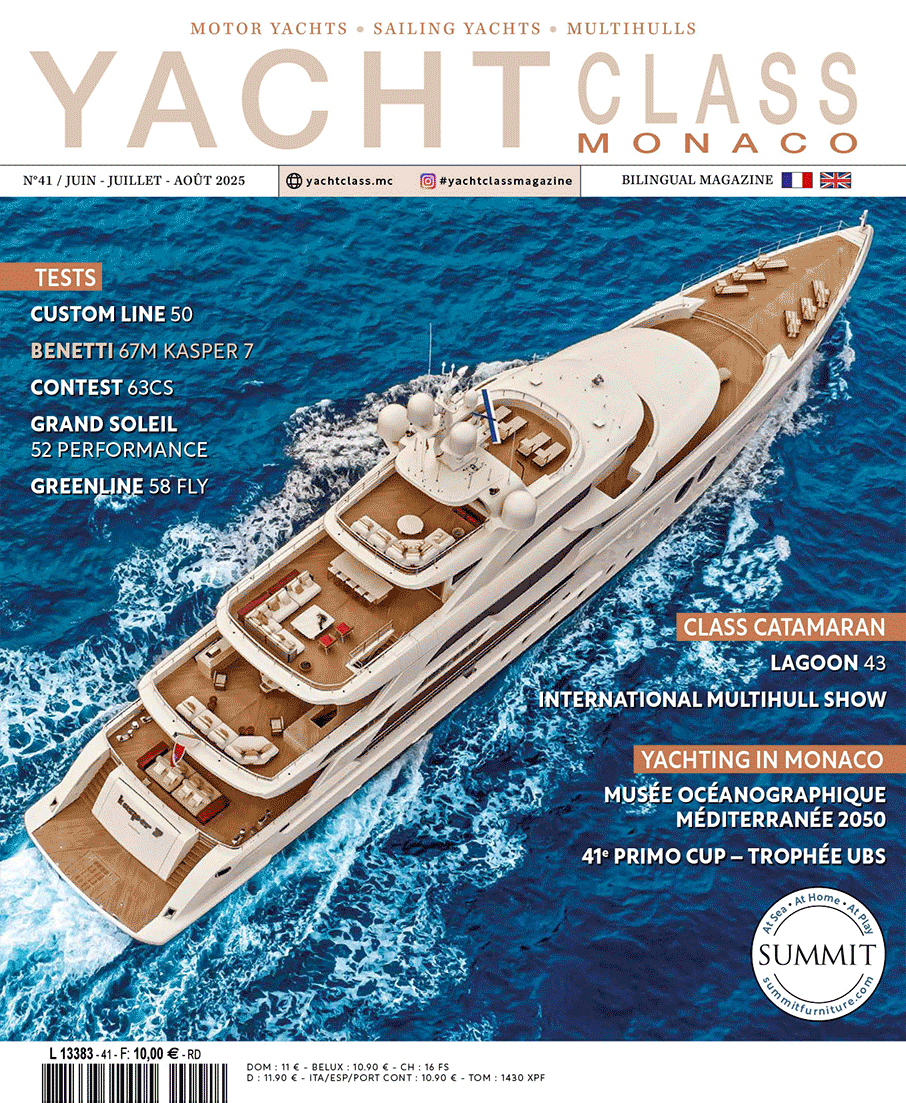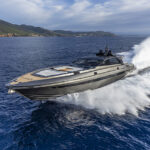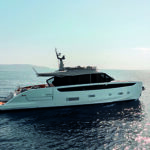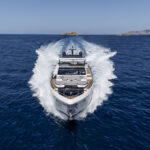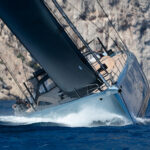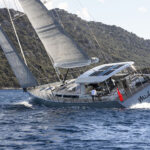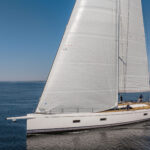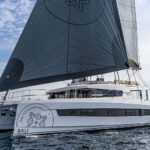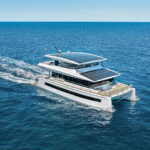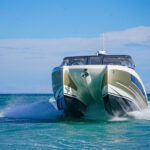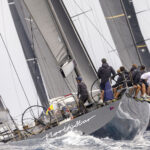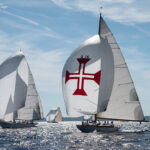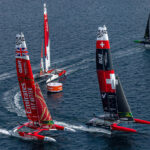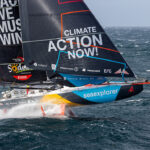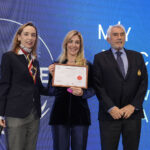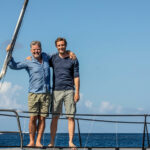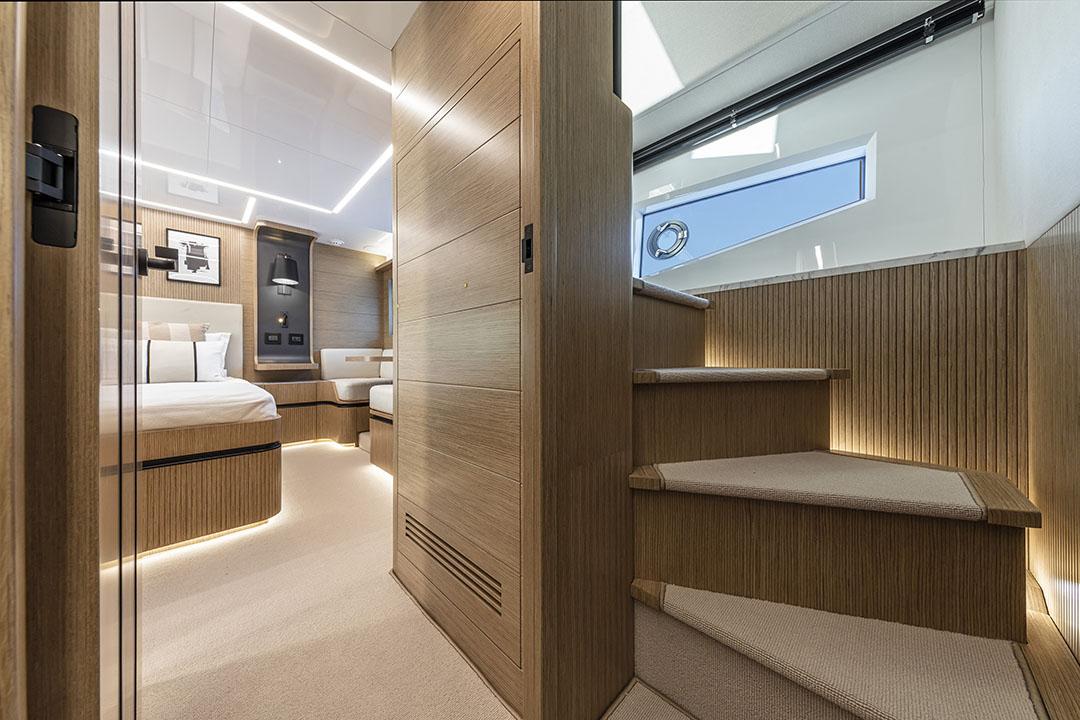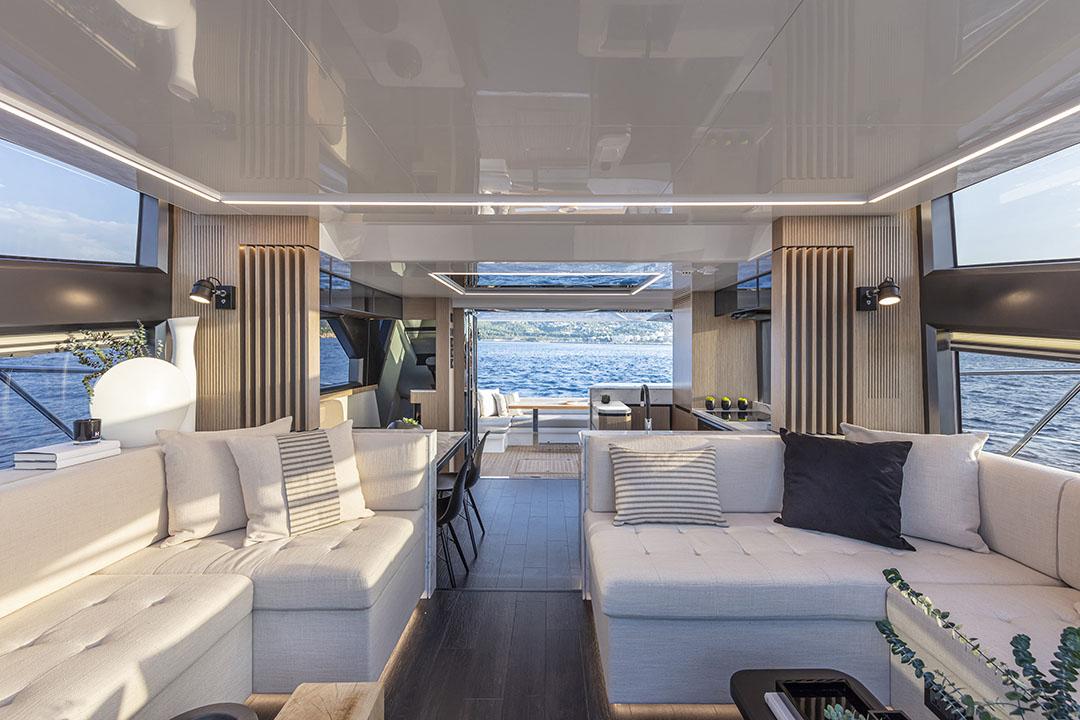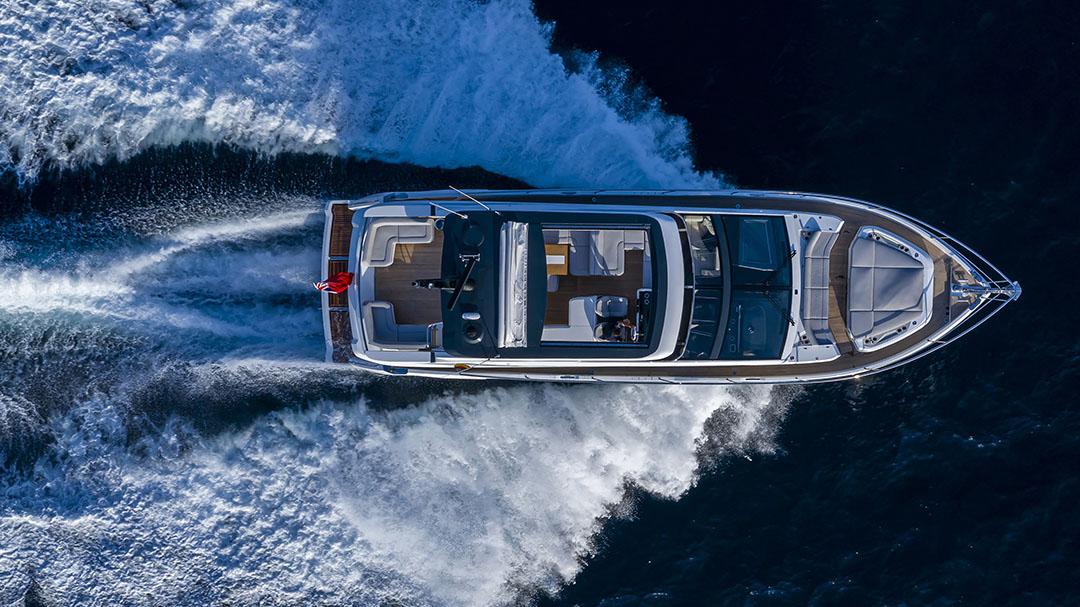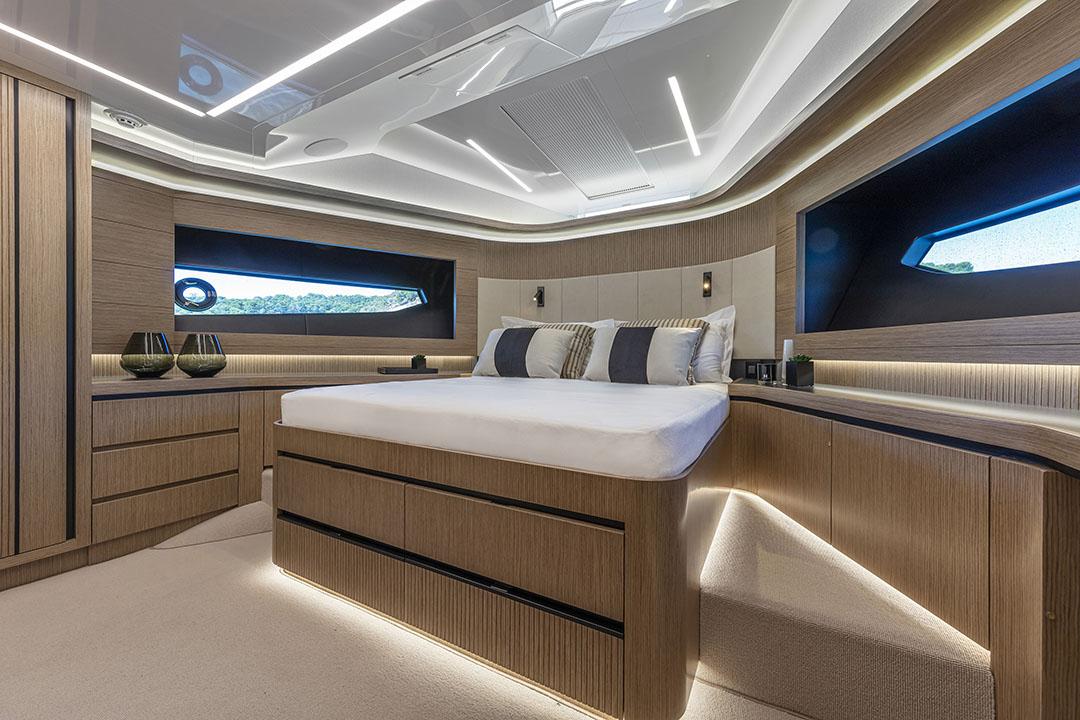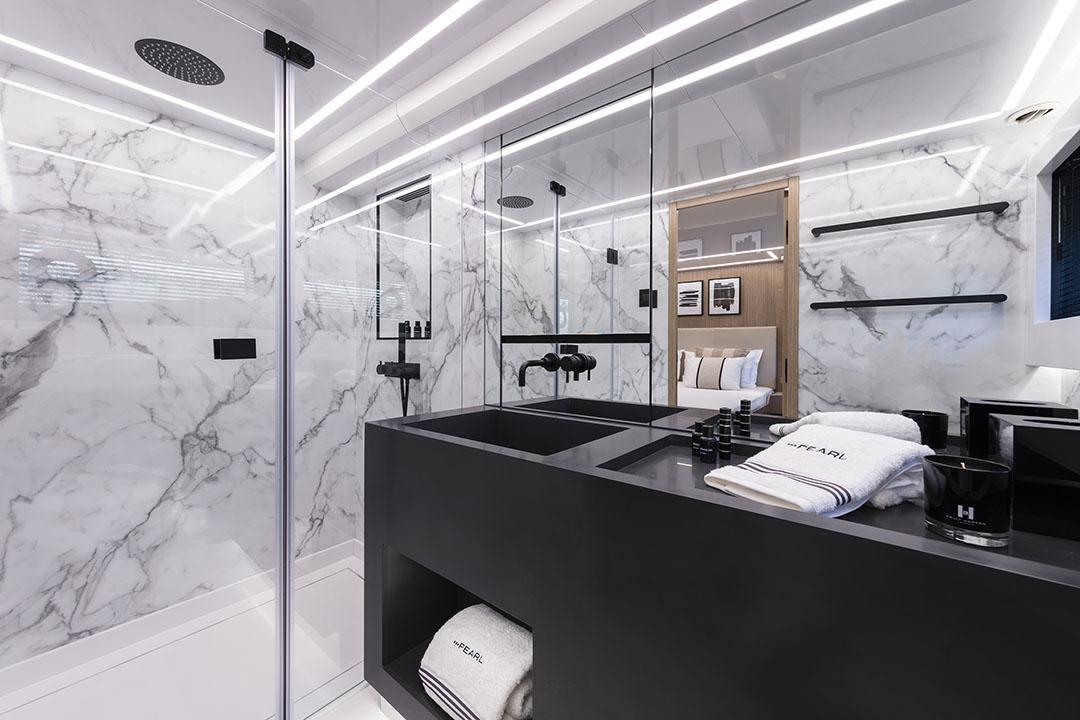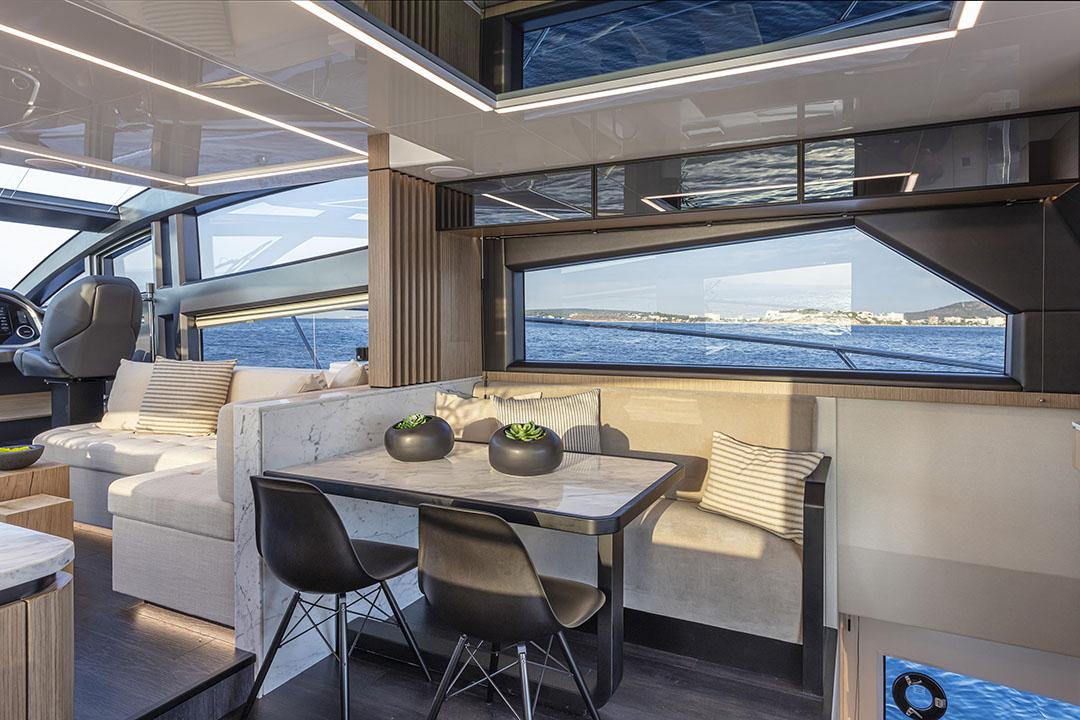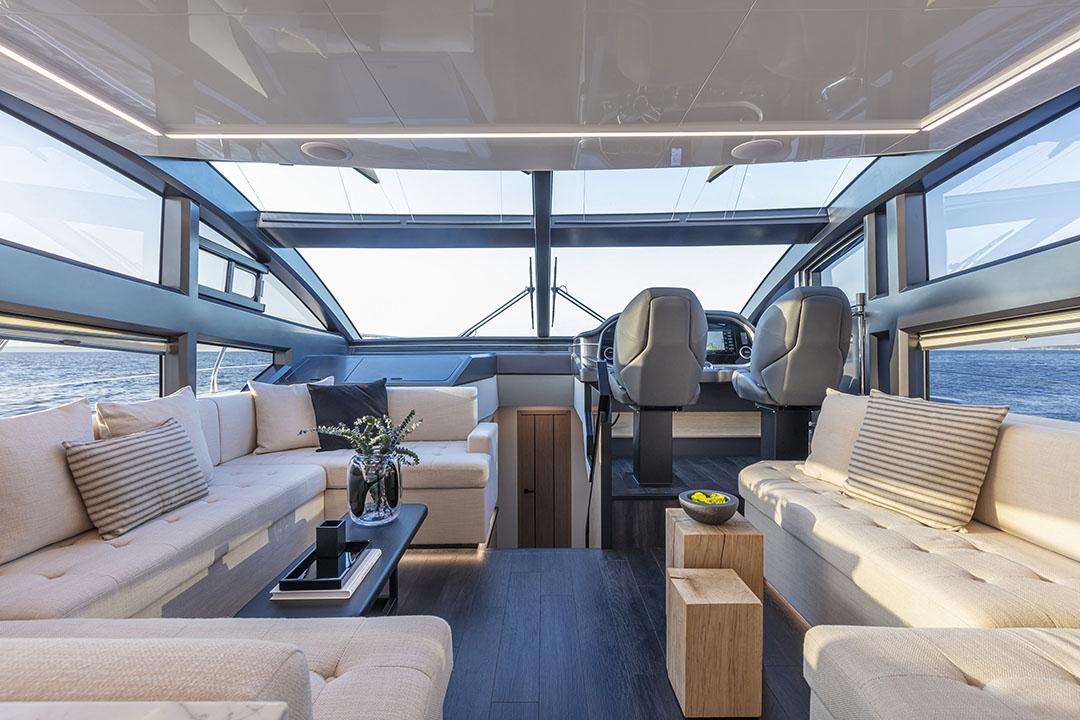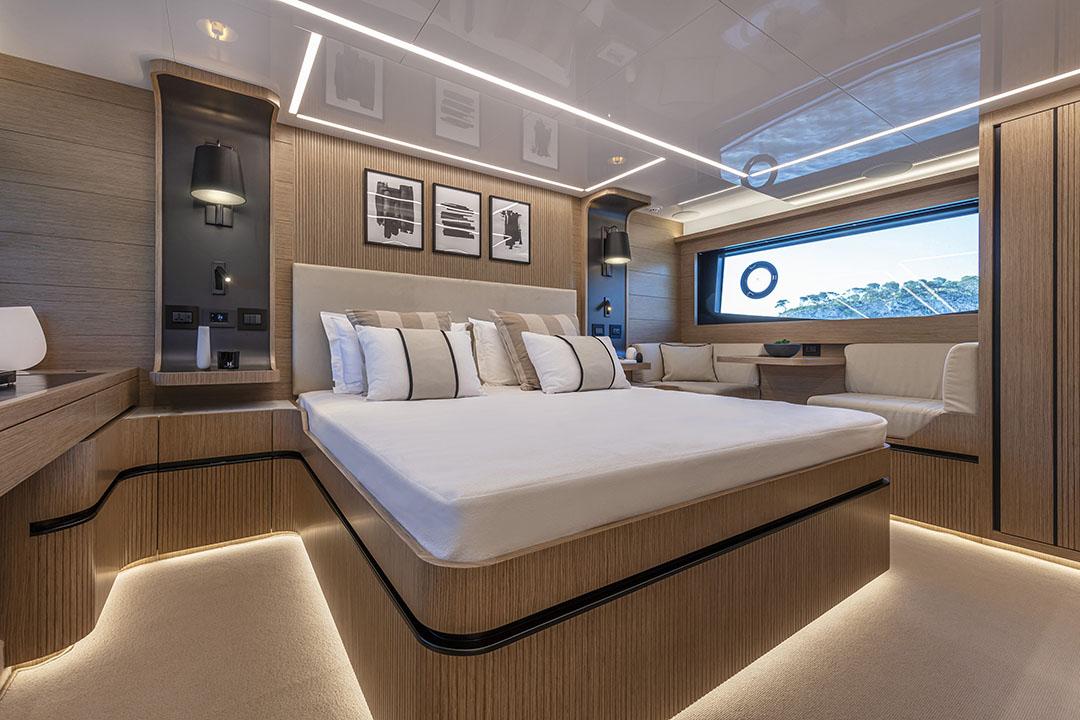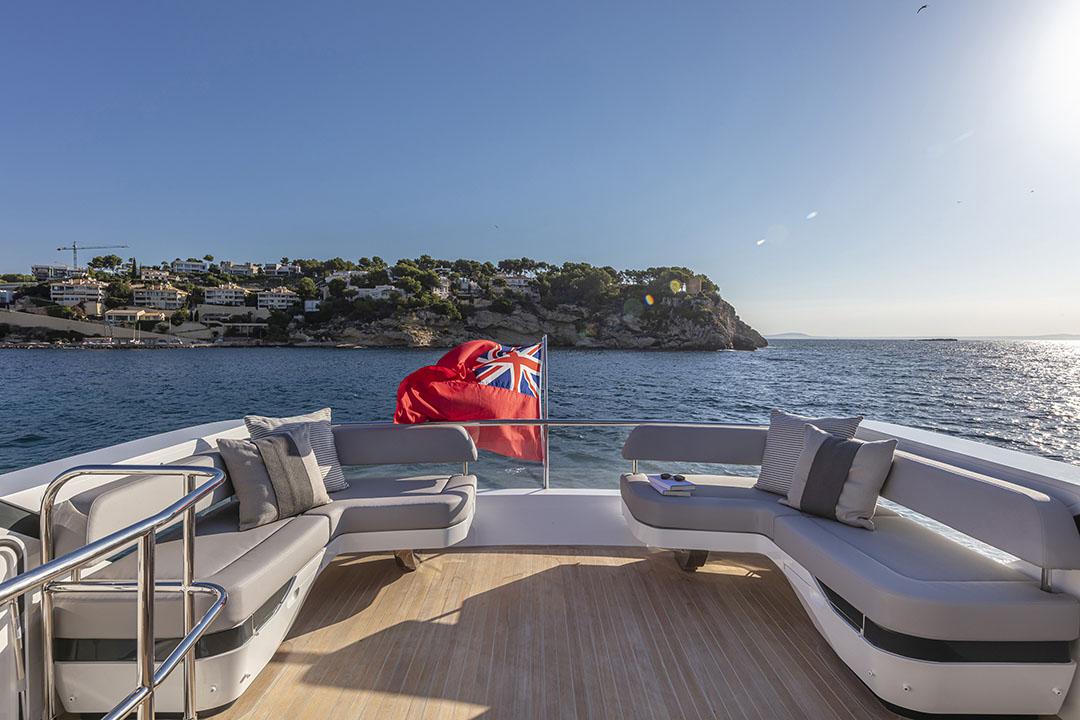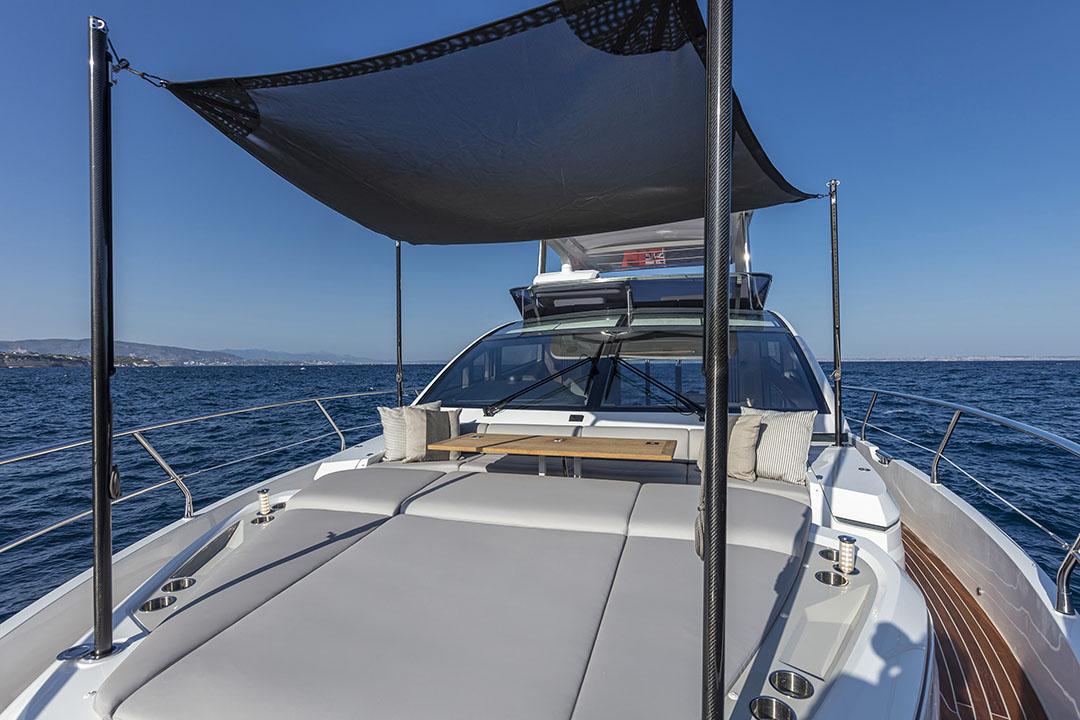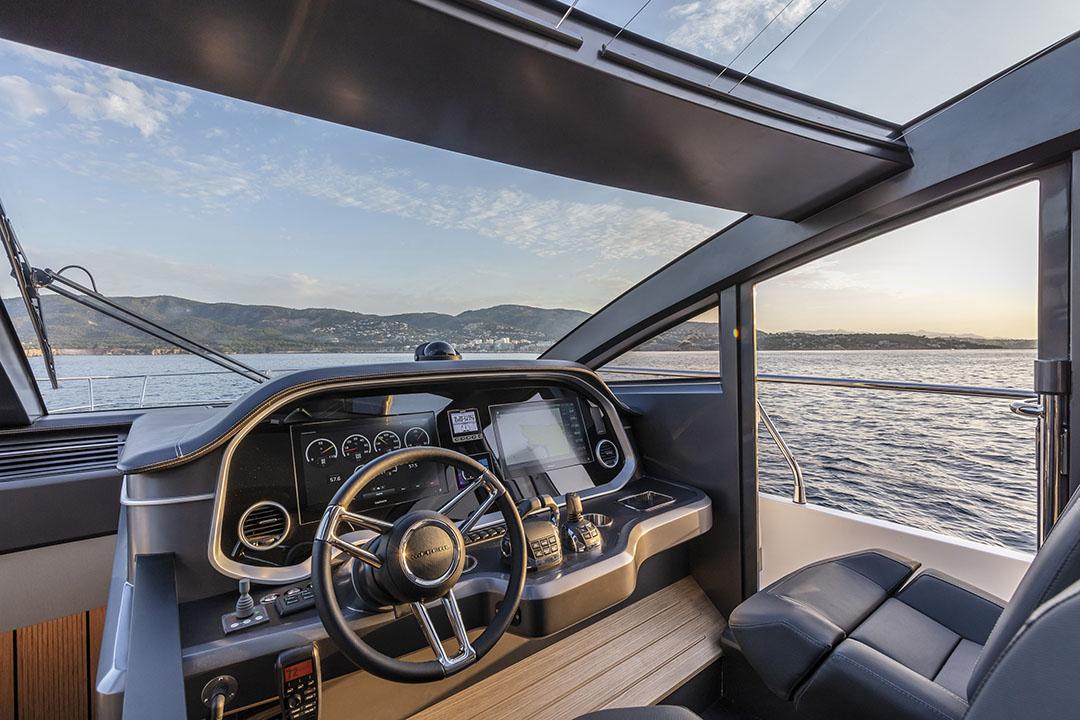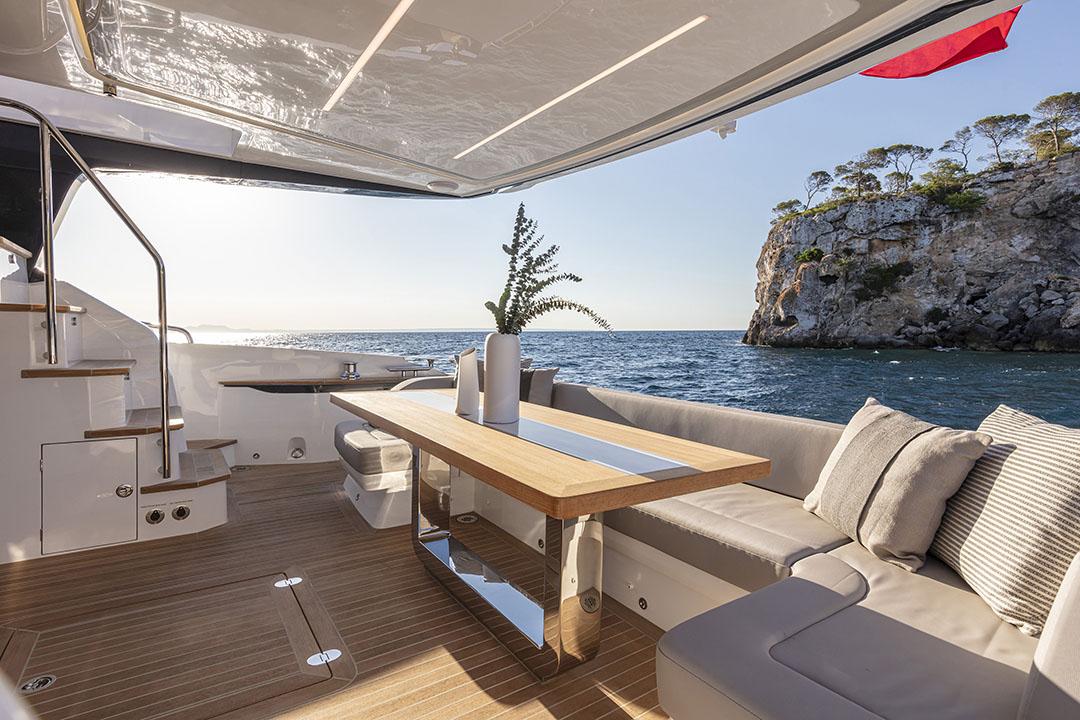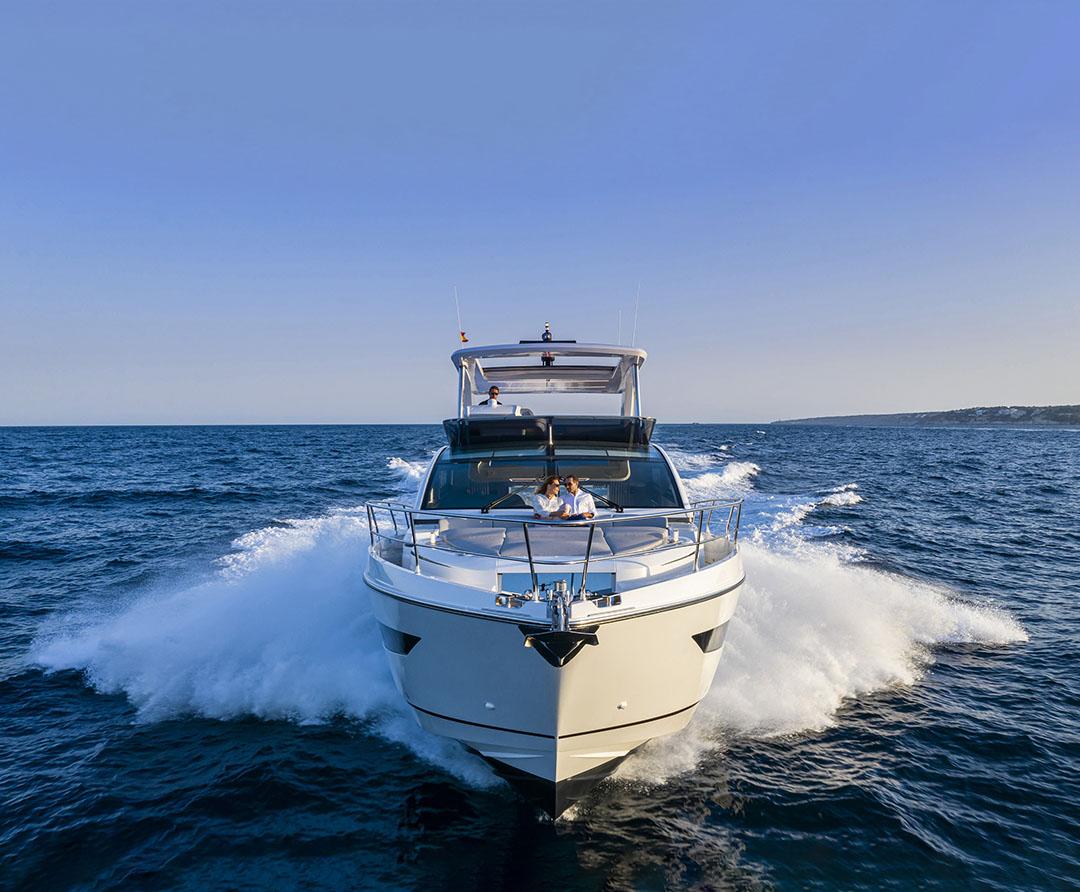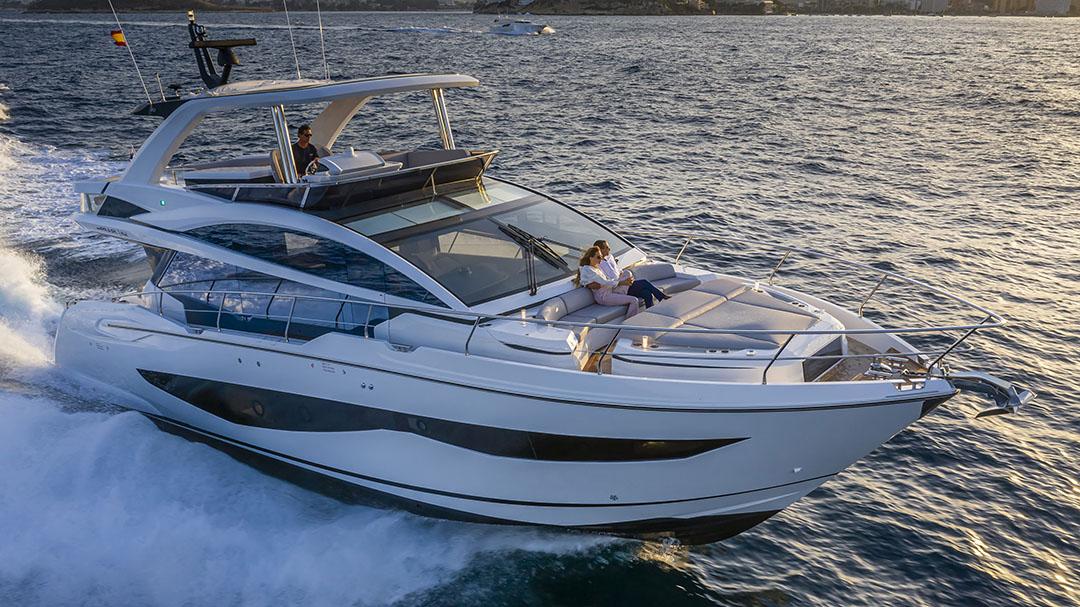Presentation
Yacht Class n°23 (dec 2020/jan-feb 2021)
Pearl Yachts Ltd
This elegant four-cabin flybridge boasts a size and steering aids that make it possible to cast off without a skipper. These features that make her a family cruiser do not preclude a pronounced level of comfort and luxury. Once again, we appreciated the work of the tandem Dixon Yacht Design and Kelly Hoppen.
Written by Philippe Leblond – Photos: All rights reserved
Be it for the exterior design, by Dixon Yacht Design, or the interior decoration, conceived by Kelly Hoppen, this tandem, already at work on the Pearl 80 and 95, has once again operated harmoniously. Dixon’s intentions were clear: “For the 62, we wanted to keep the strong Pearl DNA that runs through the 95 and the 80, the four cabins and a high degree of privacy, as well as the sporty look of the 60 (Editor’s note : launched in 2011, she is replaced by this 62)”. Actually, the silhouette of the new Pearl shows a certain sportiness, already present on the two previous models, thanks to a lightness of lines (see the delicacy of the two converging lines acting as the base of the flybridge) that avoids the heaviness sometimes affecting flybridge below 20 metres. The glazed surfaces with stretched lines also contribute to this dynamism, while providing significant natural light, be it on the main deck or in the cabins belowdecks. Of course, the presence of the hard top with an opening fabric panel does not really match the silhouette, but it will be appreciated during the hottest hours. She was moored in the Puerto Portals Marina, in Majorca, within easy reach of the Spanish dealer, Baxter Marine, who immediately encouraged us to board for a first visit, followed by a sea trial.
Extra brightness thanks to the XXL windshield
The first observation that can be made in the aft cockpit, lined with teak and light color joints, is that the Pearl is wide for a 62 foot. A nice teak/stainless steel table sits parallel to a comfortable sofa. With three occasional armchairs, eight guests can easily seat for an aperitif or a meal. A good thing because, as we discovered later, the interior dining area is a little narrow. On starboard, a staircase leads down to the wide swim platform, where the accommodation for the jet-ski and toys opens up. A few steps also lead to the gangways secured by a bulwark and a high pulpit. The foredeck is almost entirely occupied by a vast sunbed and a sofa with an aperitif table. It can be protected from the sunrays by an awning, stretched between four carbon fiber poles. The bow is dedicated to the mooring gear, the windlass being operated by a local remote control or from the two helm stations.
Let’s go back to the stern to enter the saloon through the large opening connecting the cockpit and the reception area. When the galley’s (electric) window is open, its marble worktop acts as a double-sided bar, illustrating the idea of erasing the interior/exterior boundaries dear to many yards. This galley is not that spacious but it is particularly well equipped and functional. It faces a small dinette which is, unfortunately, not in adequacy with the potential number of passengers (eight since there are four cabins). Actually no more than 4/5 guests can sit there, because of the proximity of the privative staircase leading to the master cabin. When guests exceed this number, it will be necessary to make do with the cockpit saloon and hope for good weather…
In the front part of this large open-plan volume (with a 2.03 m headroom), just punctuated by two wooden trellised panels, are two opposite comfortable sofas with sea view. This place is luminous, notably thanks to the profiled windshield extending far above the saloon and offering a “sky view”. The wheelhouse features two adjustable, grey leather bucket seats, facing an aesthetic and functional dashboard. When seated there, the field of vision is unobstructed, but a standing tall skipper could be bothered by the cesura in the windshield … Of course, when the weather is fine, it is also possible to climb on the flybridge where, in addition to a two-seater helm station with a complete dashboard, a beautiful sofa provides company to the helmsman. The central part hosts a large dinette for eight facing a well-equipped kitchenette with barbecue. The aft part of the flybridge, unsheltered by the hard-top, is devoted to sunbathing, thanks to two long L-shaped sofas overlooking the sea.
Decoration: the primary role of marble
Let’s head belowdecks to discover the sleeping area. The British shipyard has taken advantage of the location of the IPS transmissions, father aft towards the transom, that frees up a maximum of space forward, unlike the shaft lines requiring a more forward mechanical layout. This extra space has thus allowed the installation of four beautiful cabins, which is rare on a yacht of this length. The staircase located in the saloon leads only to the master, which enjoys a significant surface area with, on portside, a black leather desk that also serves as a dressing table, while the starboard side features a small saloon (for a peaceful breakfast?). Note that the Alcantara headboard is placed against the forward bulkhead, at the farthest point from the engine room, separated off the bedroom by the bathroom with its sumptuous marble shower and massive black stone washbasin. There is no real dressing room, but two closets and numerous cupboards providing the necessary storage. From the wheelhouse, a staircase leads down to the three other cabins, a forward VIP and two central twins. The VIP is en suite, while the two others share the second bathroom.
Once again, the London decorator, Kelly Hoppen, who has an exclusive collaboration with Pearl in the yachting sector, has made the most of the volumes of this 62 foot to create a greater sensation of space than what usually emanates from a unit of this length. Unlike the Pearl 95, we presented in Yacht Class n°16, the luxury atmosphere of this 62, if comparable enough, is established through less marked contrasts, with a strong presence of light oak, alternating large panels and multiple slats. The furnishing fabrics (carpets, bedspreads, cushions) are light beige, giving a very luminous character to the interiors, which already receive plenty of natural light thanks to the generous windows. Another major element of the decoration is the Calacatta marble (Italy), pale grey with black grey veins, that is abundant in the bathrooms and the galley/dining area. Of course, the buyer can choose between different materials and numerous shades.
Lively and easy to handle thanks to IPS
Unlike the Pearl 95, equipped with MTU shaft drives, the new 62 stands out with a Volvo Penta IPS1200 propulsion system, with two 900 hp diesels driving the famous multidirectional twin propeller pods. After engine start, the “calm” of this mechanical set surprises. Almost noiseless and free of diesel fumes, the 62 foot moves sideways away from the dock. The rudder angle indicator shows “zero”. The precision and intuitiveness of the joystick work wonders. A bow thruster is also available in case of strong side winds… The near non-existence of vibrations also contributes to the pleasure of manoeuvring. In this area, the “skyhook” (virtual anchor) function is also significant, for example, to hold position while waiting for the fuel station dock.
At a distance from the port, properly installed at the flybridge controls, we frankly pushed forward the two electronic levers. The ensuing acceleration was vigorous (only 11 seconds to go from idle to 20 knots) and the boat seemed to accelerate effortlessly to reach a maximum speed announced at 32 knots by the shipyard. A value we did not reach as the GPS froze at 30 knots, under the conditions of our test, with a half-full fuel tank, a full tank of water and six people on board. According to Iain Smallridge, Pearl’s Managing Director, present on board, the fault lied with the Interceptor Trim System, inactive then, which resulted into a loss of 1.5 to 2 knots. The residual swell of 80 cm allowed the hull to show its good balance and flexibility of crossing, without observing any structural vibrations or interference noises. The sound levels observed at 2 000 rpm, i.e. 22.4 knots, confirmed this positive impression, with 68 dBA in the saloon and 70 dBA in the main cabin. Another advantage of the pods is the boat’s scalable qualities on curves, with a marked inward heel that makes it possible to do very short turns, which is impossible with shaft lines or, even less so, with surface propellers. A word about her range: with a 250 miles range at the reference cruising speed (22.4 knots) the Pearl “gets the job done”. This value makes it possible to refuel anywhere in the Mediterranean, without the risk of running out of fuel. And to space out port visits, settling for a displacement speed, at 11 knots, will increase the range to 376 miles.
Apart from a cramped interior dining area, there is little to reproach the new flagship of the Pearl fleet. The designers’ collaboration once again worked quite well to make this yacht attractive for both her advantageous profile and her habitability, boasting four beautiful cabins, plus a crew cabin.
Technical sheet
